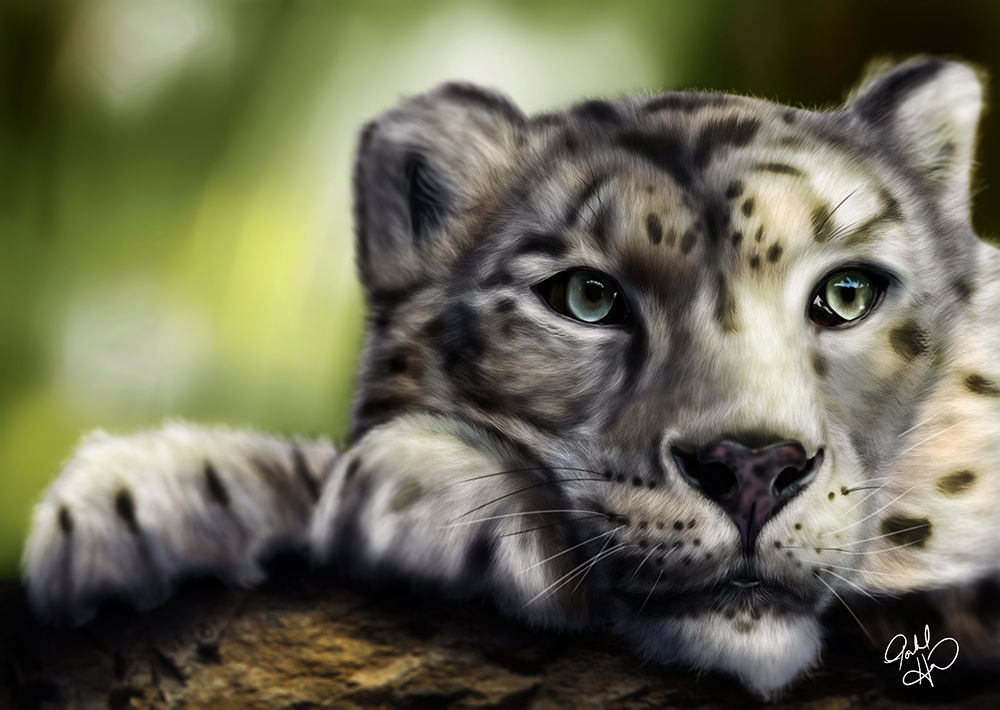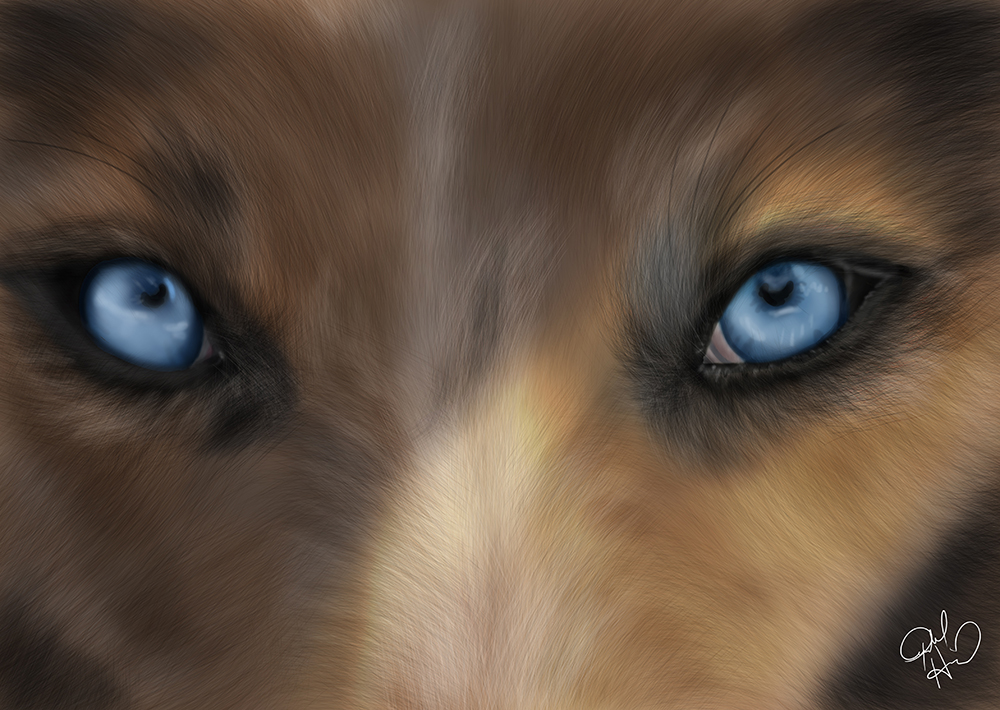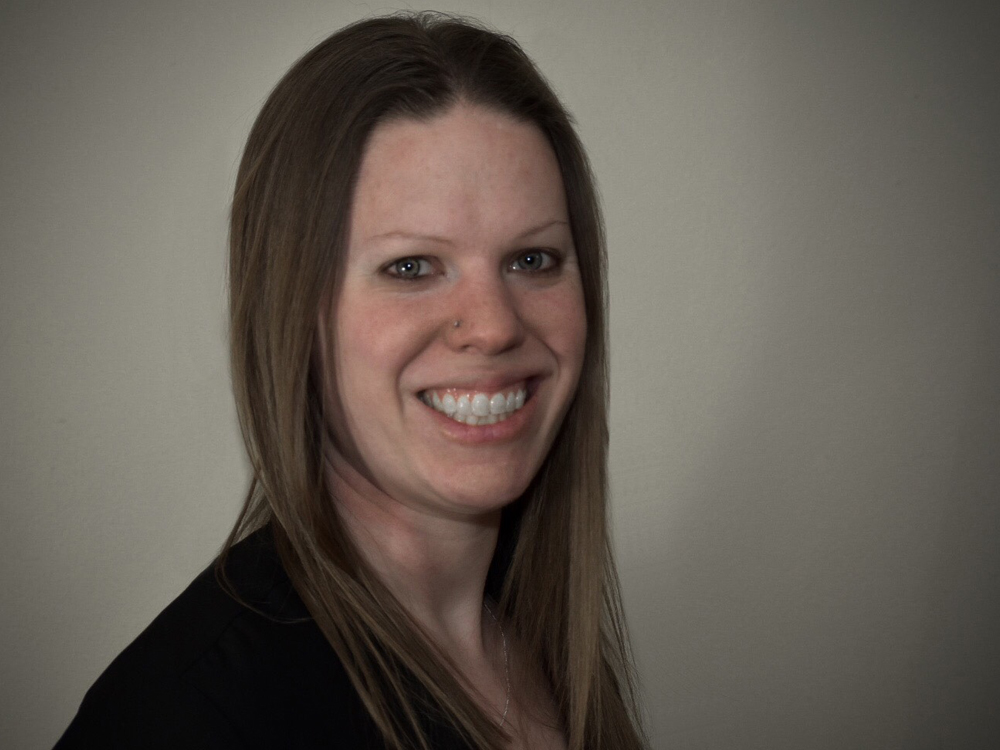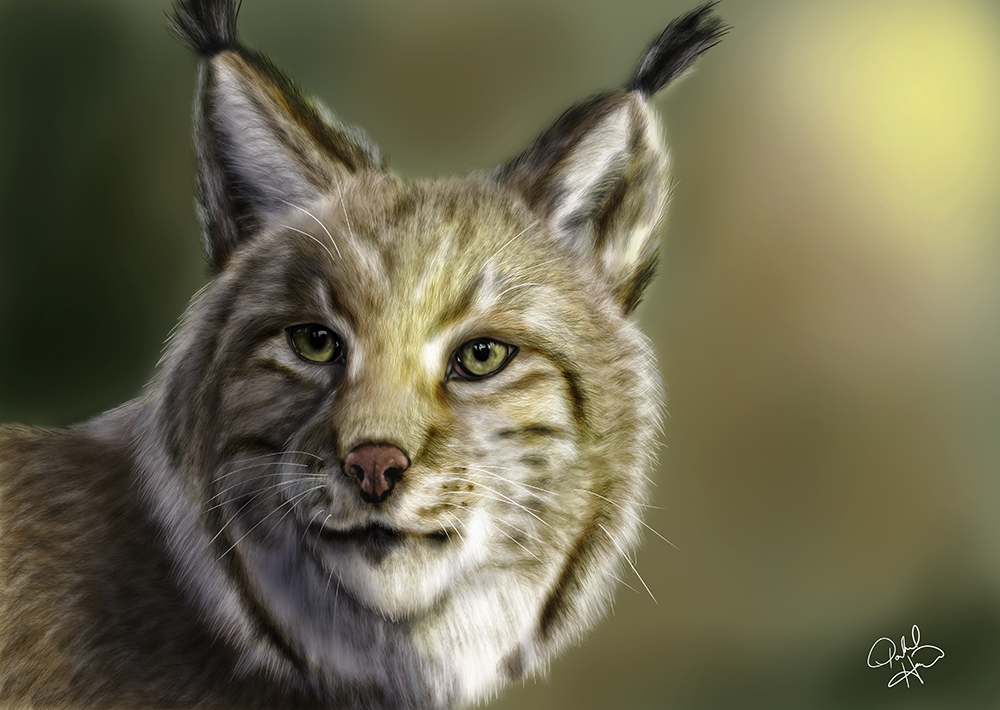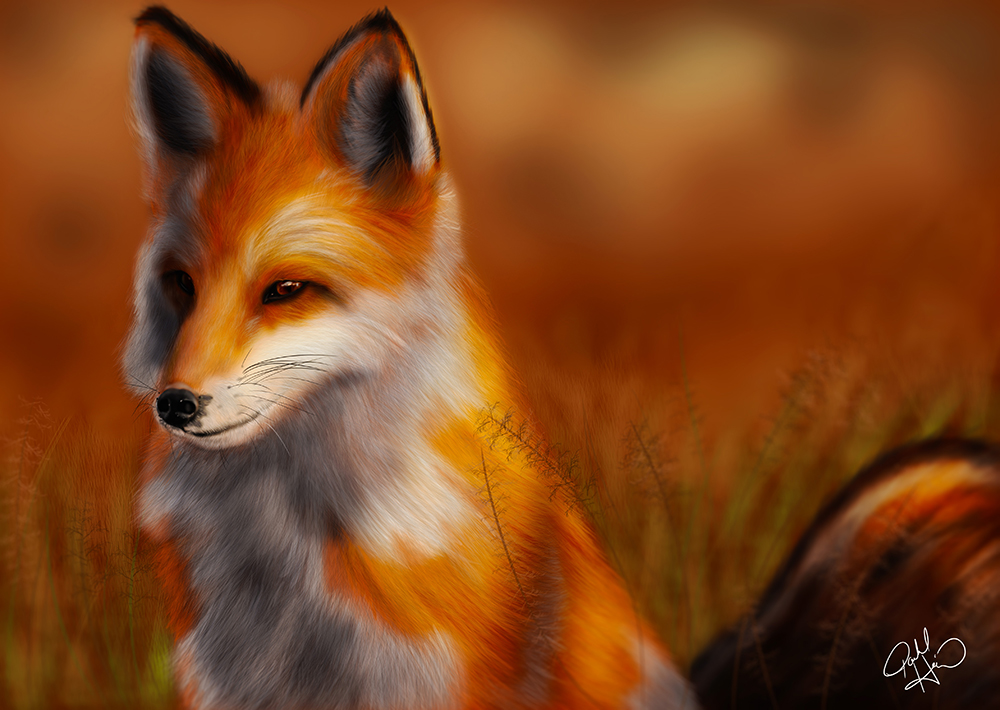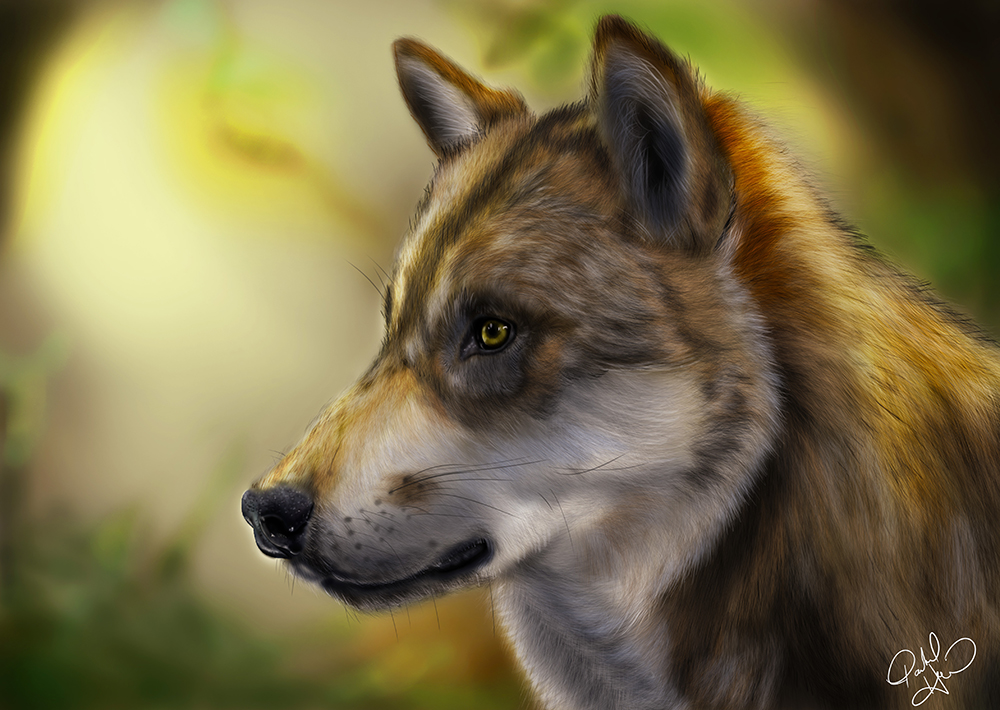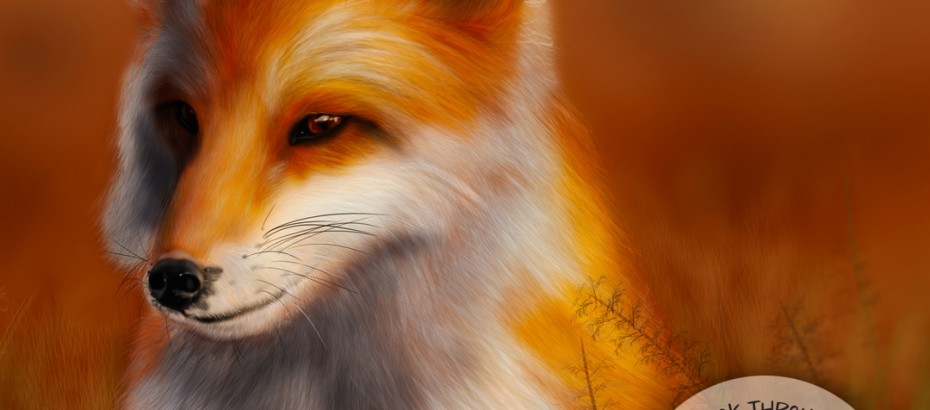At the tender age of eleven, Rachel Heibel decided she really wanted to learn how to draw people. She would sit down for hours with a tablet and a #2 pencil drawing pictures of the celebrities featured in magazines.
After graduating high school in 2002, Rachel started to slip away from her drawing habit. She strayed further from her it after getting married in 2006 and having a baby five and a half years later. However, in 2013 she began learning how to 3D model within Blender, which reawakened the artist inside of her. She networked with a company called Theory Animation and joined their team as an animator.
At the beginning of 2017, she went back to her roots of drawing. She wanted to learn how to draw and paint digitally, and through a combination of tutorials, books, and teaching herself through trial and error, she learned how to paint in Photoshop.
Now Rachel has found a way to combine her love of art with her love of animals. She creates lifelike digital paintings of animals and uses her art to raise money for non-profit animal rescues.
I had the opportunity to interview Rachel to find out more about her artwork and what is involved in creating it. Let’s see what she has to say:
Do you prefer digital or hand drawing?
At the moment I prefer digital, because it allows me so much more flexibility than I can get with traditional. For example, I can add photographic textures to my paintings to give them more realism. I use very little (if any at all) sometimes, but it can give it that extra kick it needs.
While most of my experience is in traditional art, I really took to digital and fell in love with it. I credit animator/artist Aaron Blaise for the inspiration and education to take my skills to the digital realm.
What are some of the unique challenges associated with drawing people versus animals?
With people there’s more pressure to get it “right.” We look at people every day and though we all have our own distinct features, the general makeup is the same, so subconsciously, we know something is off, even if we don’t know the person in the artwork.
Animals are kind of the same way, in that we still expect the anatomy to be correct in order to appropriately identify them. However, I feel like there’s a little more leeway with that. I can’t pinpoint the exact reason. The answer could lie under all that fur! I just know that it took me longer to learn and master human anatomy than various animal anatomy.
How long did it take you to learn Adobe Photoshop?
Not very long. I’m a fast learner. I was playing with it very sporadically over a couple of years before I actually made it a daily practice. Once I did that, I feel like I mastered it pretty quickly. I would say in roughly a month or two of serious practice.
Where did your passion for helping animals begin?
I feel like I’ve always had this love for animals and wildlife. It was especially ignited in 2006 when my husband and I took our first trip to Pigeon Forge/Gatlinburg, Tennessee. There’s a lot of wildlife down there, especially black bears! I more recently had the epiphany to use my artwork to raise money for different nonprofit animal rescues or wildlife conservation efforts.
How have the different phases of your life influenced your art?
I think that being married and having a child really shifted my focus because I am no longer living for myself, but for them, and trying to be the best wife and mother I can be. It’s caused me to look outside of myself and try to determine how I can set the best example for my daughter. Being able to do what I love (create art) and help animals at the same time has been incredibly rewarding. I’ve come a long way from drawing random celebrities!
Do you prefer to stick closely with reference material or do you let your imagination run wild more?
I always stick with reference material because it’s absolutely paramount in this type of artwork, no matter what stage you’re in. However, I don’t copy exactly, and that’s where my artistic freedom will come in a little. As long as you know the rules, you’ll know how to break them correctly.
You said you worked for an animation company. What was a typical day like in that field?
Well, I worked part-time essentially. After my day job was completed, I would go to work for the studio. Typically, I would get assigned a shot (or more) to animate. Depending on the length of the shot, it could take a week or two for it to reach the point of approval from our studio head. It usually had to go through several iterations. We would have what are called Dailies a couple times a week. We would meet using Zoom and go over shots during those meetings. Our show that we produced at the time was an online series called “Ray & Clovis,” which you can find on YouTube. It would usually take a few months of work to finish an episode from start to finish. I really enjoyed being an animator, even though it could be frustrating at times. It’s definitely not a job for the faint of heart, but I loved it!
You’re self-taught, but would you consider taking any art classes given the chance?
Absolutely. I’m a firm believer that you can never stop learning! While I do consider myself self-taught, I owe a lot of my education to several sources I’ve found from other artists online and through a large personal library of books.
Given the chance, what other art forms would you like to explore?
I’ve dabbled in matte painting and wouldn’t mind going further in depth with that because I didn’t devote much time to it when I was experimenting with it. I find it to be a very fascinating art form, it is consistently used in TV, and movies to create those fantastic scenes and worlds like you see in Lord of the Rings or any of the Marvel movies, for example.
What advice would you give someone who wants to learn digital drawing?
Learn as much as you can and don’t give up! Purchase books. Watch tutorials. Take classes. There are amazing tips and tricks available online – whether you’re using Photoshop, Krita, GIMP, or whatever software you choose. I know it can be especially tricky for someone segueing from traditional to digital. Although I mentioned him earlier, I can’t give enough credit to Aaron Blaise. He has fantastic, in-depth tutorials that I can’t recommend enough. He’s an artist who started out traditionally and now also works digitally, and he’s a great resource. He puts a lot of love into his tutorials.
Thank you, Rachel, for taking the time to chat with me. You can find Rachel Heibel on her website www.rachelheibelart.com/, as well as Facebook Ink Worx and Instagram @ink_worx84.

About the Author:
Erin Maloney is pursuing her Associate’s degree in Business Administration Marketing & Management and will graduate in March of 2019. She is a poet and a writer who is passionate about the arts and helping it reach the masses. You can follow her on Facebook and Instagram.
